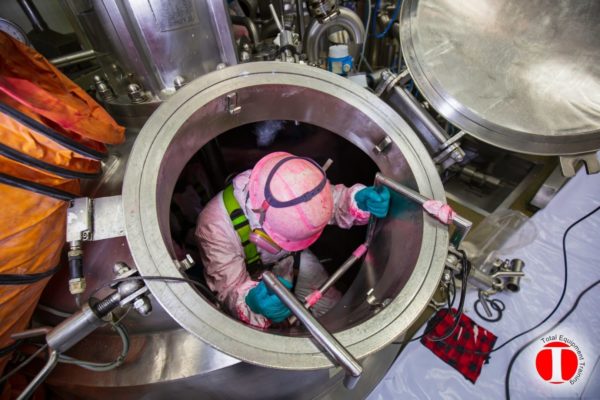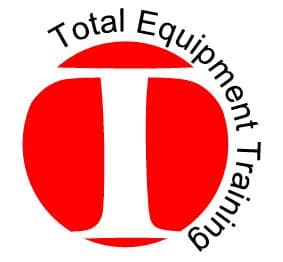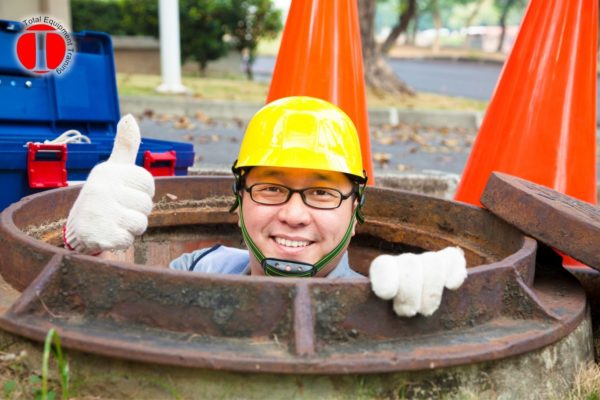Workplaces often demand that we be flexible in applying our skills in different situations. This really applies in scenarios where workers actually have to move and contort their bodies to actually fit into certain spaces in order to get a job done. The construction industry often calls for such skills, when fixing piping, accessing manholes, entering crawl spaces, pits, equipment housings and tanks. Such locations are considered Confined Spaces. They may come with certain risks, like exposure to toxic substances, electrocution, drowning, and most common, asphyxiation (suffocating).
Due to the hazardous nature of working in such small spaces, OSHA (Occupational Safety and Health Administration) has developed several protocols to enhance the safety of workers carrying out tasks in these conditions. It is both the employers’ and workers’ responsibility to be properly prepared –with both equipment and knowledge. Training is required when working in, or around, confined spaces.
Book your online confined space training today with Total Equipment Training.
What Is Confined Space Training?
Confined space training is the learning of proper techniques to enable workers to properly and safely work in restricted spaces. These areas are not fit for continuous human occupancy and pose several threats to an individual’s wellbeing.

Total Equipment Training offers several OSHA-approved confined space training courses. If you have any questions, our experienced team is able to assist you: contact us today.
How Does OSHA Define Confined Space and Confined Space Training?
OSHA defines confined spaces as work areas that:
- Are large enough for a worker to enter
- Have limited means of entry and/or exit
- Are not designed for continuous occupancy
It should be noted that there is another categorization of confined spaces as defined by OSHA, called ‘permit-required confined space’. Their features are one or more of the following:
- They contain (or may contain) a hazardous atmosphere
- Contain material in which an entrant can be engulfed, like water, oil, or sewage
- Has converging walls or sloping floors that lead into a smaller area
- Or contain any recognized health hazard like exposed wires, unguarded machinery or high temperature exposure.
If you are unsure of what training you need, please call our knowledgeable staff for details: (610) 321-2679
What Is Meant by a Confined Space Entry and How Do You Do It Safely?
Confined space entry is entering a confined space in order to carry out work inside it. There are several safety measures that should be observed when preparing to enter and when working in confined spaces. Some of these safety measures include:
- Linking the entrant to safety harnesses to be able to pull out and/or prevent falling when inside the confined space.
- Ensuring the entrant has a sufficient supply of breathable air when inside the confined space.
- An alarm system to alert the site in the case of an emergency.
- Constant supervision by a site supervisor or trained worker (attendant) to act as rescue personnel while there is a worker inside the confined space.
How Often Is Confined Space Training Required?
OSHA does not have specific regulations on the required frequency of confined space training, but does prefer that training be done: before a worker begins the relevant duties, whenever there is a new hazard that has not been trained for, or whenever an employer deems it necessary for their staff to have the training.
Contact Total Equipment Training
How Long Is Confined Space Training Good For?
OSHA has no strict regulation on the duration of confined space training, but encourages a refresher after every one or two years. OSHA does require that employers review the permit program annually and that rescue personnel perform practice rescues annually.
What Props Can Be Used For Confined Space Training?
To help the trainees gain appropriate skills without putting them in actual danger, employers can seek out specifically designed confined space props, which have walls that can be dismantled and reassembled into different configurations. Another alternative is to have decommissioned tanks and pipes used as props for confined space safety training.
While Total Equipment Training does not offer these props for sale on our site, we do have many resources for on site heavy equipment training.
How Can Total Equipment Training Help With Confined Space Training?
Total Equipment Training provides a nationally recognized and OSHA compliant platform for training while working in confined spaces. We offer numerous confined space resources such as photos and videos to assist with the online training courses.
Our knowledgeable professionals have years of practical experience on working in a variety of types of confined spaces. The training specifically satisfies OSHA requirements by meeting the Confined Spaces Standard, covering topics such as entry and rescue procedures, acceptable entry conditions and proper confined space entry and rescue equipment.
Reach out to our friendly staff for more information and to schedule your Confined Space Training!


